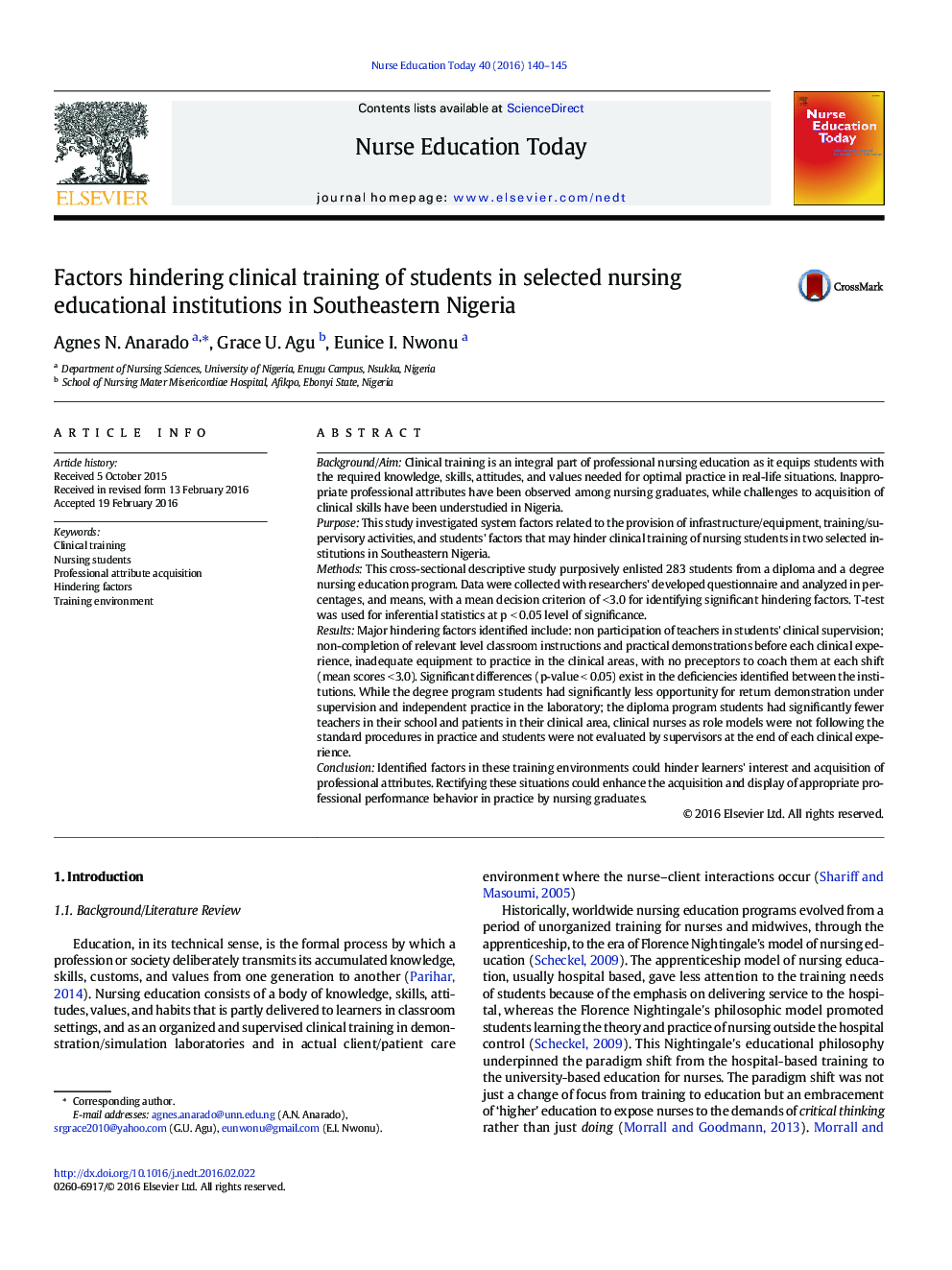| کد مقاله | کد نشریه | سال انتشار | مقاله انگلیسی | نسخه تمام متن |
|---|---|---|---|---|
| 367862 | 621548 | 2016 | 6 صفحه PDF | دانلود رایگان |
• Inappropriate professional attributes observed in Nigeria degree nursing students.
• Nigeria student nurses have hindering factors to their clinical skills acquisition.
• Hindering factors exist in both diploma and degree programs studied.
• Students lack equipment for, tutorial/supervisory support and guidance in training.
• Nursing needs to address clinical skills training requirements of her students.
Background/AimClinical training is an integral part of professional nursing education as it equips students with the required knowledge, skills, attitudes, and values needed for optimal practice in real-life situations. Inappropriate professional attributes have been observed among nursing graduates, while challenges to acquisition of clinical skills have been understudied in Nigeria.PurposeThis study investigated system factors related to the provision of infrastructure/equipment, training/supervisory activities, and students' factors that may hinder clinical training of nursing students in two selected institutions in Southeastern Nigeria.MethodsThis cross-sectional descriptive study purposively enlisted 283 students from a diploma and a degree nursing education program. Data were collected with researchers' developed questionnaire and analyzed in percentages, and means, with a mean decision criterion of < 3.0 for identifying significant hindering factors. T-test was used for inferential statistics at p < 0.05 level of significance.ResultsMajor hindering factors identified include: non participation of teachers in students' clinical supervision; non-completion of relevant level classroom instructions and practical demonstrations before each clinical experience, inadequate equipment to practice in the clinical areas, with no preceptors to coach them at each shift (mean scores < 3.0). Significant differences (p-value < 0.05) exist in the deficiencies identified between the institutions. While the degree program students had significantly less opportunity for return demonstration under supervision and independent practice in the laboratory; the diploma program students had significantly fewer teachers in their school and patients in their clinical area, clinical nurses as role models were not following the standard procedures in practice and students were not evaluated by supervisors at the end of each clinical experience.ConclusionIdentified factors in these training environments could hinder learners' interest and acquisition of professional attributes. Rectifying these situations could enhance the acquisition and display of appropriate professional performance behavior in practice by nursing graduates.
Journal: Nurse Education Today - Volume 40, May 2016, Pages 140–145
